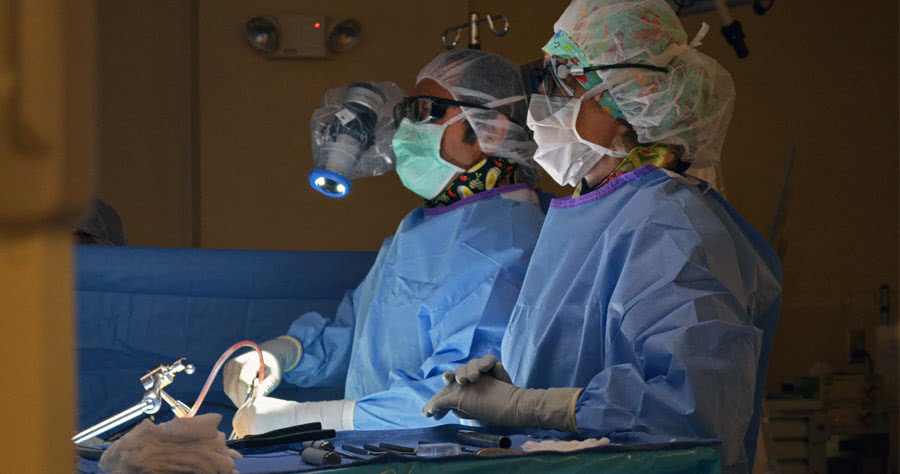ORBEYE: Riverside’s Latest 4-K, 3D Surgical Technology for Spine and Neurosurgery Patients
 The drive to improve patient outcomes has led to many innovations, including the ORBEYE. This surgical visualization technology is now being used at Riverside Healthcare.
The drive to improve patient outcomes has led to many innovations, including the ORBEYE. This surgical visualization technology is now being used at Riverside Healthcare.
Dr. Juan Jimenez, a neurosurgeon and Medical Director of the Riverside Neurosciences Institute, elaborates on how this breakthrough 4K, 3D technology helps spine and neurosurgery patients at Riverside.
Get to Know the ORBEYE
The ORBEYE is a visualization system designed to support surgery through better optics, with an operation room-friendly camera and high definition viewing screen. With previous technology, the visuals were not as detailed.
“I like to use a simple analogy– a standard color TV versus a high-definition television,” says Dr. Jimenez. “It’s the crispness, the amount of detail. The importance is that when we’re operating, it’s a three-dimensional world. It’s the advent of not only higher resolution and higher magnification, but the 3D component. That brings you literally into the surgical field. The equipment has large screen monitors.”
Seeing more in greater detail on the screens means easier work through small incisions, leading to better patient outcomes. “We do minimally invasive procedures through very, very small incisions—no larger than a dime or a nickel. Through those half-inch size ports, we are able to visualize the brain nerves and other structures,” explains Dr. Jimenez. “Being able to visualize these structures as much as 26 times the original size totally revolutionizes how we do things. And, it allows us to use microsurgical techniques and micro-instruments to treat a whole host of pathologies that can affect the brain and the spinal cord.”
Improved Operations
Dr. Jimenez notes that microscopes or loops had surgeons tethered to patients. “There’s a lot of variability in the human anatomy, which means that we could be at an awkward or uncomfortable position for hours.”
Maneuvering to complete complex surgeries is easier with the ORBEYE. “Having a large monitor with 3D visualization, we’re able to maintain good ergonomics, good position, and good spinal alignment that, when neglected, can have detrimental effects for the surgeon over time.”
With 55-inch screen 3D monitors, anatomical detail is incredible. Not only does it help the entire surgical team stay on the same page with the operation, but it also enhances learning for students, residents, and more. The entire surgical team can see exactly what is happening as it happens.
Riverside Neurosciences Institute implements the ORBEYE technology for a wide variety of conditions. Brain, spine, and nerve conditions, head injuries, strokes, brain bleeding, herniated disks, and more can be treated with the ORBEYE.
“I’m very proud to report that we are the first institution in the State of Illinois that has acquired this technology. We have been in the forefront of neurosurgical care here in the community. To be ahead of some of our academic centers, it really speaks to the investment of the community, of the organization, of our donors, everybody that’s involved in the delivery of care here at Riverside Medical Center. Being aware of these technologies is important, and being involved in the development of these technologies is important. To have a trial, to have our board members and surgeons alike experience and be informed of these new technologies—that improve our patient outcomes—I think is very rewarding and very satisfying.”
To listen to an interview about this topic with Dr. Juan Jimenez, visit our Well Within Reach Podcast Page.
